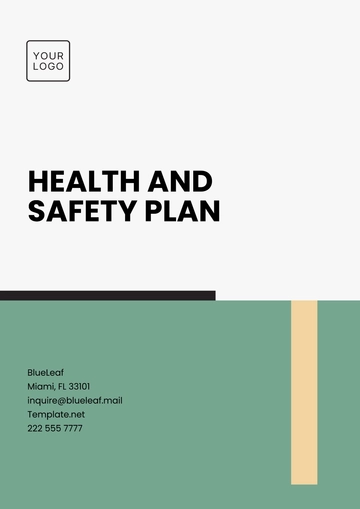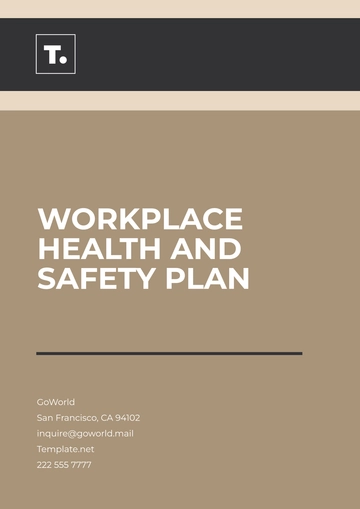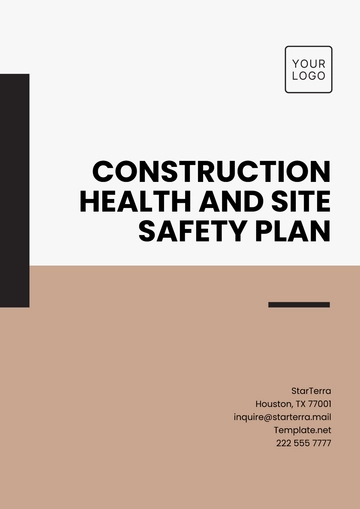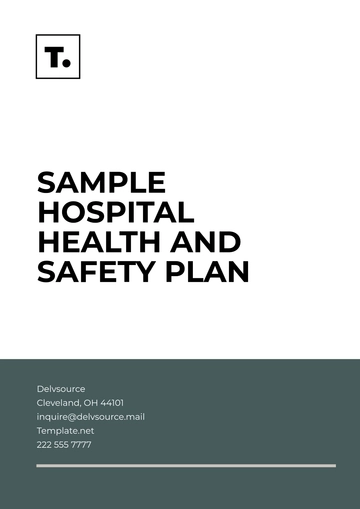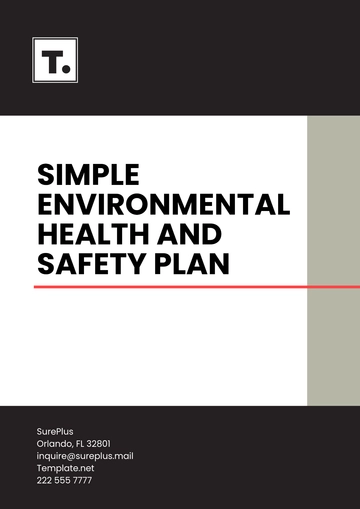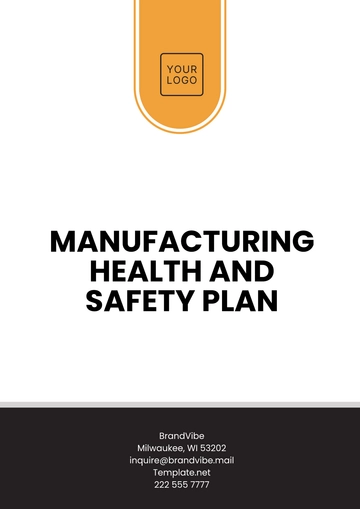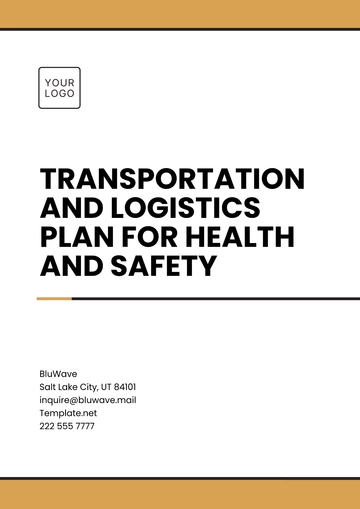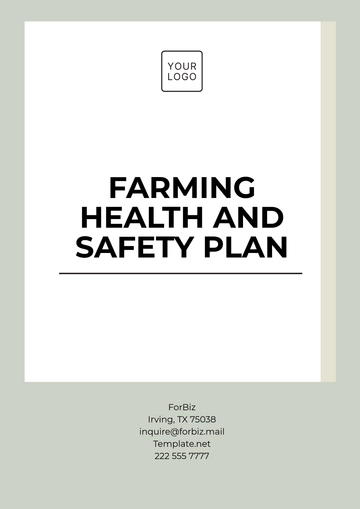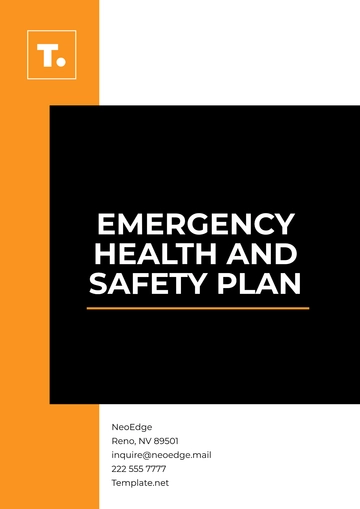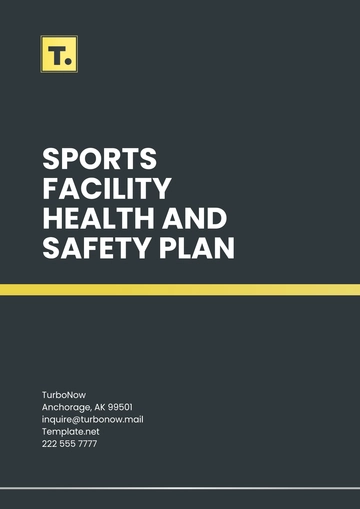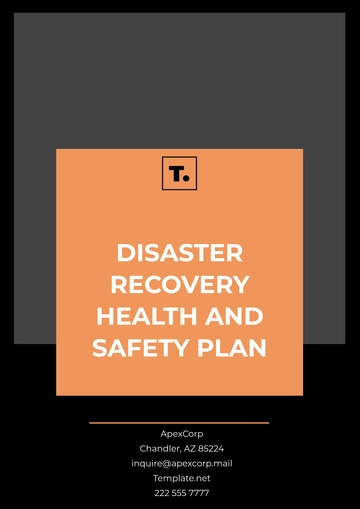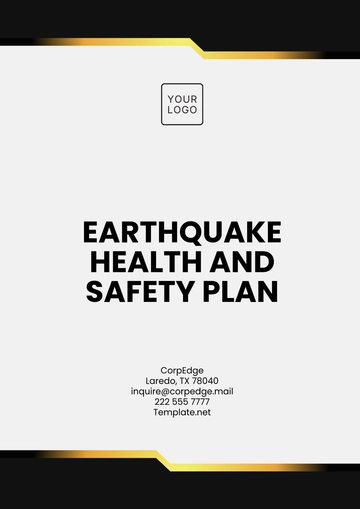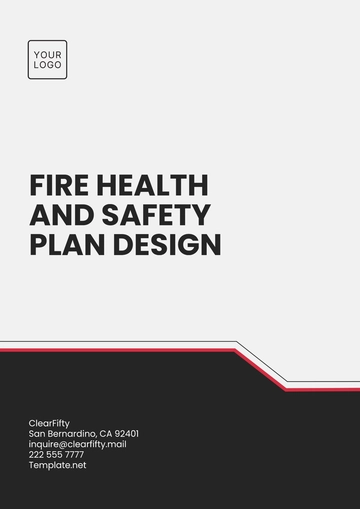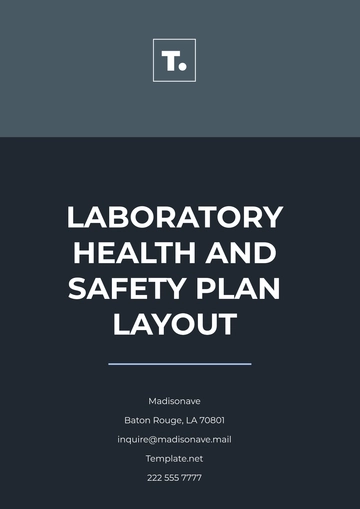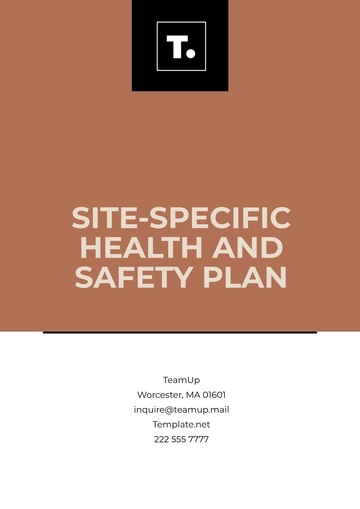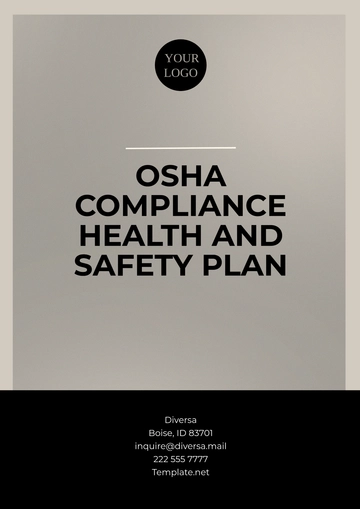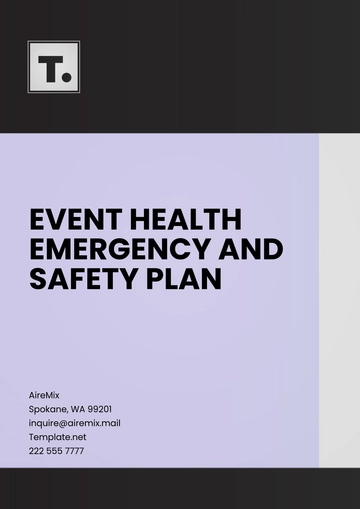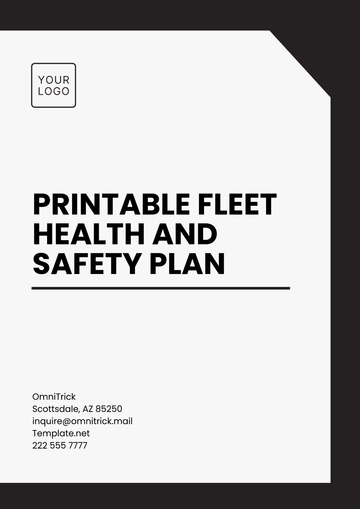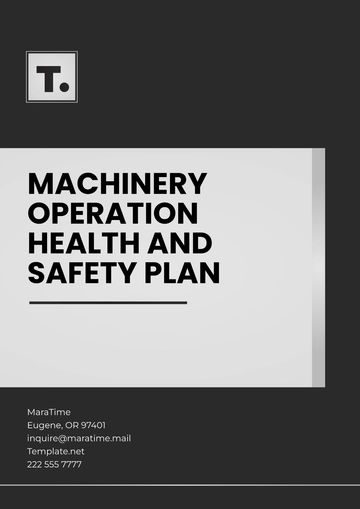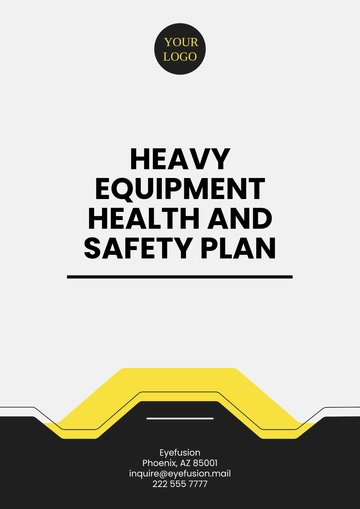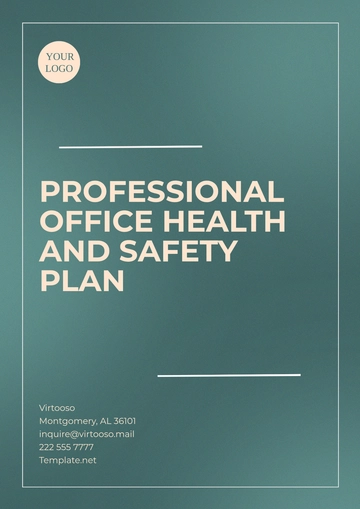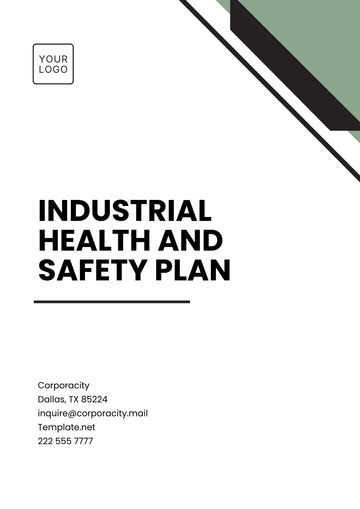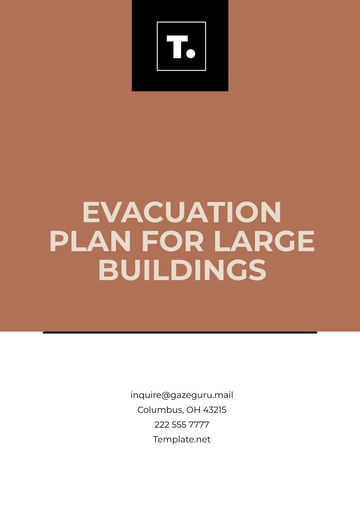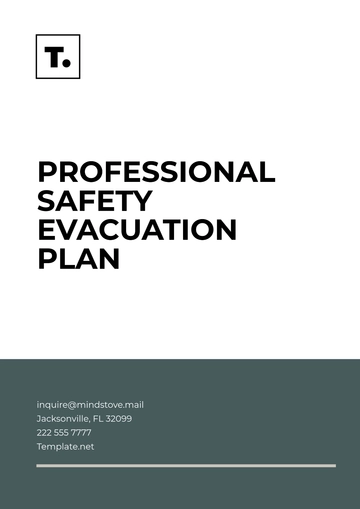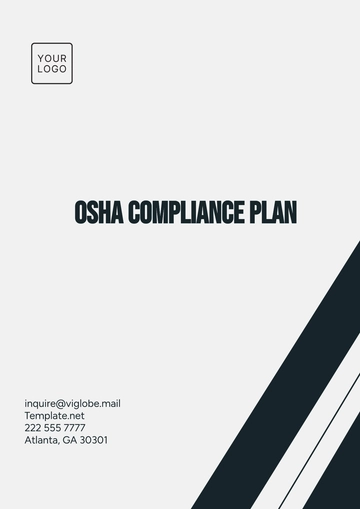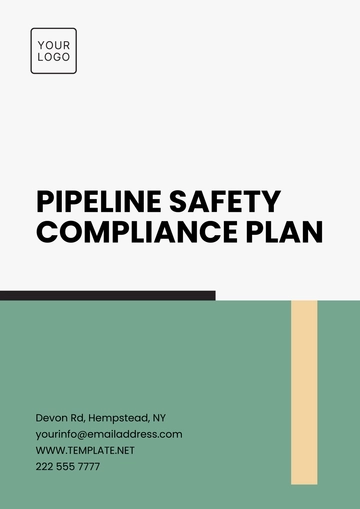Free Commercial Site Safety Plan
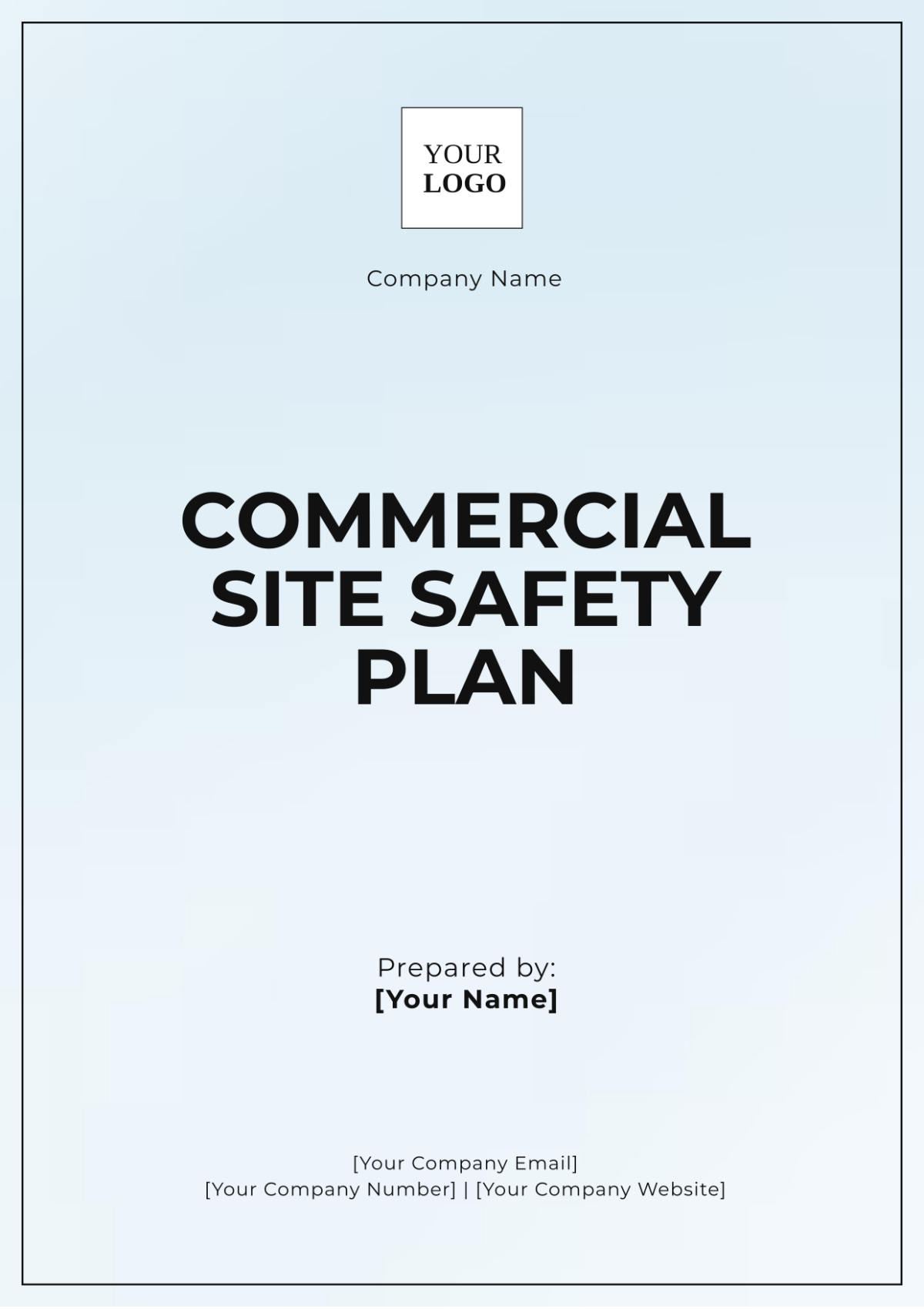
Prepared By: [Your Name]
Company: [Your Company Name]
I. Introduction
The purpose of this Commercial Site Safety Plan is to provide a comprehensive overview of the necessary safety measures and protocols to ensure a safe working environment. This plan covers various aspects of safety, including emergency procedures, hazard communication, personal protective equipment (PPE), and fire safety.
II. Hazard Communication
A. Identifying Hazards
To maintain a safe work environment, it is crucial to identify potential hazards. These include chemical, physical, and biological hazards that could pose risks to employees.
Chemical Hazards: Include solvents, flammable liquids, and toxic substances.
Physical Hazards: These include machinery, noise, and electrical hazards.
Biological Hazards: These include bacteria, viruses, and other pathogens.
B. Hazard Communication Program
A comprehensive Hazard Communication Program should be in place to ensure that all employees are aware of the hazards present in the workplace and the necessary precautions to take.
Labeling: All hazardous materials should be properly labeled.
Safety Data Sheets (SDS): SDS should be readily available for all hazardous substances.
Training: Employees should receive training on hazard communication.
III. Personal Protective Equipment (PPE)
A. Types of PPE
Various types of PPE should be available to protect employees from different hazards. These include:
Head Protection: Helmets, hard hats
Eye Protection: Safety goggles, face shields
Hand Protection: Gloves
Body Protection: Coveralls, aprons
Foot Protection: Safety boots
Respiratory Protection: Masks, respirators
B. PPE Maintenance and Replacement
To ensure the effectiveness of PPE, regular maintenance and timely replacement of the equipment are necessary:
Inspect PPE regularly for wear and tear.
Replace damaged or expired PPE immediately.
Maintain a record of PPE issuance and replacement.
IV. Emergency Procedures
A. Emergency Exits and Evacuation
Clear and accessible emergency exits should be in place, along with a well-defined evacuation plan. Conduct regular evacuation drills to ensure that all employees are familiar with the procedures.
B. First Aid and Medical Assistance
First aid stations should be strategically located, and trained personnel should be available to provide immediate medical assistance. A list of emergency contact numbers should be easily accessible to all employees.
V. Fire Safety
A. Fire Hazards
Identify potential fire hazards in the workplace, including flammable materials and equipment that may cause sparks or overheating.
Hazard | Risk Level | Mitigation Measures |
|---|---|---|
Flammable Liquids | High | Store in appropriate containers and away from ignition sources |
Electrical Equipment | Medium | Regular maintenance and inspections |
Combustible Dust | Medium | Proper ventilation and dust collection systems |
B. Fire Prevention and Response
Implementing fire prevention measures and having a clear response plan is critical to minimizing fire-related hazards:
Install and maintain fire extinguishers.
Train employees on fire emergency procedures.
Conduct regular fire drills.
VI. Training and Education
A. Safety Training Programs
Conduct regular safety training programs to Ensure that all employees are well-versed in safety procedures and protocols.
Orientation Training: For new employees
Refresher Training: For existing employees
Specialized Training: For specific roles and hazards
B. Continuous Improvement
Regularly review and update the safety plan to adapt to new regulations and emerging risks. Encourage employee feedback and participation in safety initiatives.
VII. Conclusion
In conclusion, the Commercial Site Safety Plan is essential for maintaining a safe working environment. By implementing effective safety measures, identifying hazards, providing appropriate personal protective equipment, and establishing clear emergency procedures, we can prioritize the health and safety of all personnel. Regular training and continuous improvement will help us adapt to new challenges and ensure compliance with safety regulations. Together, we can foster a culture of safety that protects our employees and enhances operational integrity. For any safety concerns, please contact the designated safety officer.
- 100% Customizable, free editor
- Access 1 Million+ Templates, photo’s & graphics
- Download or share as a template
- Click and replace photos, graphics, text, backgrounds
- Resize, crop, AI write & more
- Access advanced editor
Enhance safety management at your commercial site with the Commercial Site Safety Plan Template from Template.net. This editable and customizable template is designed to meet the specific safety needs of commercial projects. Easily tailor the content to align with your site’s protocols and regulatory standards. With its organized layout and detailed guidelines, you can effectively communicate essential safety measures, ensuring the well-being of your team and compliance with industry regulations.
You may also like
- Finance Plan
- Construction Plan
- Sales Plan
- Development Plan
- Career Plan
- Budget Plan
- HR Plan
- Education Plan
- Transition Plan
- Work Plan
- Training Plan
- Communication Plan
- Operation Plan
- Health And Safety Plan
- Strategy Plan
- Professional Development Plan
- Advertising Plan
- Risk Management Plan
- Restaurant Plan
- School Plan
- Nursing Home Patient Care Plan
- Nursing Care Plan
- Plan Event
- Startup Plan
- Social Media Plan
- Staffing Plan
- Annual Plan
- Content Plan
- Payment Plan
- Implementation Plan
- Hotel Plan
- Workout Plan
- Accounting Plan
- Campaign Plan
- Essay Plan
- 30 60 90 Day Plan
- Research Plan
- Recruitment Plan
- 90 Day Plan
- Quarterly Plan
- Emergency Plan
- 5 Year Plan
- Gym Plan
- Personal Plan
- IT and Software Plan
- Treatment Plan
- Real Estate Plan
- Law Firm Plan
- Healthcare Plan
- Improvement Plan
- Media Plan
- 5 Year Business Plan
- Learning Plan
- Marketing Campaign Plan
- Travel Agency Plan
- Cleaning Services Plan
- Interior Design Plan
- Performance Plan
- PR Plan
- Birth Plan
- Life Plan
- SEO Plan
- Disaster Recovery Plan
- Continuity Plan
- Launch Plan
- Legal Plan
- Behavior Plan
- Performance Improvement Plan
- Salon Plan
- Security Plan
- Security Management Plan
- Employee Development Plan
- Quality Plan
- Service Improvement Plan
- Growth Plan
- Incident Response Plan
- Basketball Plan
- Emergency Action Plan
- Product Launch Plan
- Spa Plan
- Employee Training Plan
- Data Analysis Plan
- Employee Action Plan
- Territory Plan
- Audit Plan
- Classroom Plan
- Activity Plan
- Parenting Plan
- Care Plan
- Project Execution Plan
- Exercise Plan
- Internship Plan
- Software Development Plan
- Continuous Improvement Plan
- Leave Plan
- 90 Day Sales Plan
- Advertising Agency Plan
- Employee Transition Plan
- Smart Action Plan
- Workplace Safety Plan
- Behavior Change Plan
- Contingency Plan
- Continuity of Operations Plan
- Health Plan
- Quality Control Plan
- Self Plan
- Sports Development Plan
- Change Management Plan
- Ecommerce Plan
- Personal Financial Plan
- Process Improvement Plan
- 30-60-90 Day Sales Plan
- Crisis Management Plan
- Engagement Plan
- Execution Plan
- Pandemic Plan
- Quality Assurance Plan
- Service Continuity Plan
- Agile Project Plan
- Fundraising Plan
- Job Transition Plan
- Asset Maintenance Plan
- Maintenance Plan
- Software Test Plan
- Staff Training and Development Plan
- 3 Year Plan
- Brand Activation Plan
- Release Plan
- Resource Plan
- Risk Mitigation Plan
- Teacher Plan
- 30 60 90 Day Plan for New Manager
- Food Safety Plan
- Food Truck Plan
- Hiring Plan
- Quality Management Plan
- Wellness Plan
- Behavior Intervention Plan
- Bonus Plan
- Investment Plan
- Maternity Leave Plan
- Pandemic Response Plan
- Succession Planning
- Coaching Plan
- Configuration Management Plan
- Remote Work Plan
- Self Care Plan
- Teaching Plan
- 100-Day Plan
- HACCP Plan
- Student Plan
- Sustainability Plan
- 30 60 90 Day Plan for Interview
- Access Plan
- Site Specific Safety Plan
